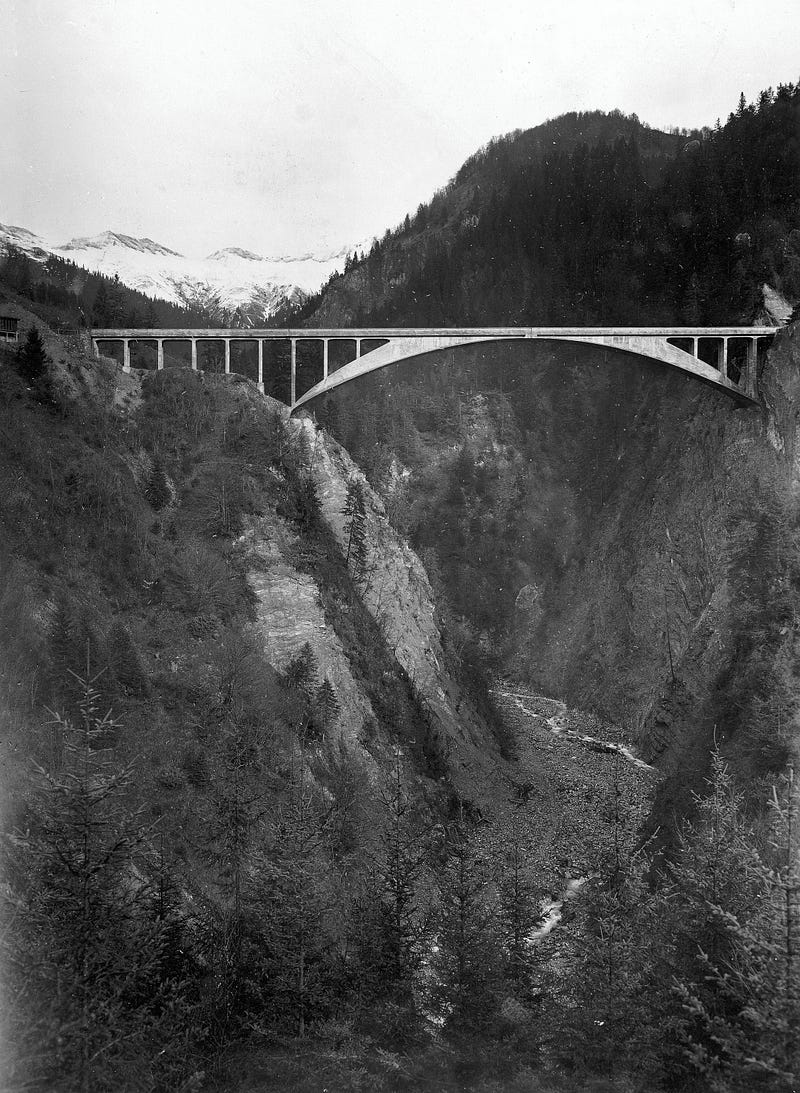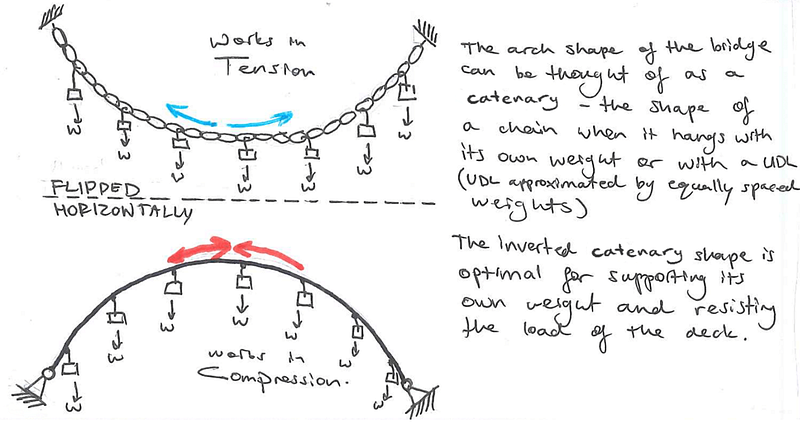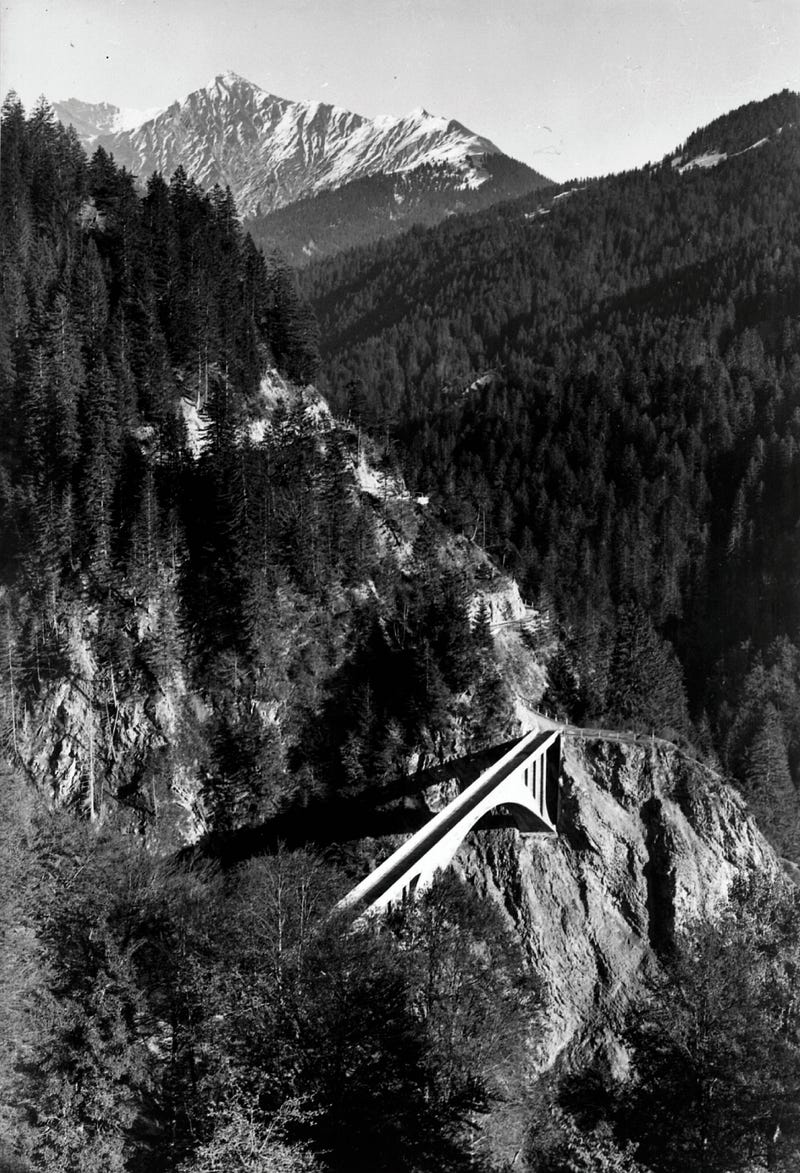A Bridge Worthy of Art: The Salginatobelbrücke
Written on
Chapter 1: The Artistic Value of Engineering Structures
Structures significantly shape our daily lives, serving as homes, tunnels, roads, and bridges. Each of these constructions influences our experiences and interactions within our environments.

Designed by Robert Maillart in 1930, the Salginatobel Bridge serves a unique purpose; it connects disparate locations in a way that roads cannot. This bridge elevates travelers, allowing them to traverse over water, valleys, or complex urban layouts.
Beyond mere functionality, exceptional structures must be constructed with efficiency and exhibit a certain beauty or elegance. Achieving this balance requires a profound understanding of materials, the building site, and a creative vision. Structures that excel in all three areas are often celebrated as examples of Structural Art. But can we appreciate structures like art?
Typically, the term "artwork" evokes images of small, crafted objects such as paintings or sculptures. However, can we expand this definition to include monumental structures like bridges? The answer is a resounding yes.
In "The Tower and the Bridge," David P. Billington outlines a tripartite definition of Structural Art, consisting of:
- Efficiency: A structure must withstand various forces (gravity, wind, and weight) while minimizing material use. Billington describes efficiency as "the delicate balance between thinness and safety."
- Economy: The structure must be financially viable and supported by stakeholders. This balance shifts between being cost-effective and excessively expensive.
- Elegance: An elegant structure harmonizes with its environment while possessing symbolic and expressive qualities.
Note: The author suggests that a contemporary revision of this triad should incorporate "Environmental Sustainability" as a fourth dimension, given the ecological toll of inefficient materials.
Robert Maillart’s Salginatobel Bridge epitomizes this triad through innovative design. Its grace, slenderness, and effective use of concrete contribute to its awe-inspiring presence.

The bridge emerged from a competition held by the Schiers municipal council in Switzerland in 1928. Among 19 submissions, Maillart's design was selected for its outstanding balance of economy, efficiency, and elegance.
Efficiency Through Innovation in Structural Engineering
The Salginatobel Bridge's design integrates two key structural concepts. Its primary form is a catenary, supported by a three-hinged arch system, which will be briefly explained below.
The Catenary
A catenary shape resembles the curve formed by a hanging chain. This shape represents the most efficient configuration for a specific length of chain and distance between its suspension points. When flipped horizontally, it creates an optimal bridge arch shape.

The Three-Hinged Arch
Temperature variations throughout the year cause concrete to expand and contract. Without proper management, this can lead to cracks. The hinges in the three-hinged arch allow for this movement, significantly extending the bridge's lifespan.


Maillart's innovations in concrete allowed him to break away from traditional masonry designs, showcasing that concrete can be both visually appealing and elegant.
Is It Structural Art or Merely Engineering?
While the technical aspects demonstrate the Salginatobel Bridge's engineering prowess, what elevates it to museum-worthy status?
Much like a powerful artwork connects with its audience, transporting them to a different realm, great structural art resonates similarly. The bridge's horizontal span contrasts beautifully with the vertical ravine it traverses, symbolizing humanity's audacious conquest of nature.
Yet, it acknowledges its surroundings honestly; the bridge does not disguise its materiality, nor does it mimic nature for mere aesthetics. Instead, it gently interacts with the solid mountainside from which its concrete originates.
The bridge's tapering forms represent the forces flowing through it, with its arch being narrow at the ends and thickening towards the center, mirroring the bending moments experienced throughout the structure.

Concluding Thoughts
As a structural engineering student, I have developed the ability to distinguish between subpar structures and those that are truly exceptional. The Salginatobel Bridge exemplifies greatness through its efficiency, economy, and elegance, making it deserving of a place in an art museum.
Chapter 2: Exploring the Artistic Dimensions of the Salginatobel Bridge
Painting Demonstration: Bridge, Central Park
This video presents a painting demonstration that captures the beauty of the Salginatobel Bridge, illustrating the intersection of art and engineering.
Enigmatis: The Mists of Ravenwood - Full Game Playthrough
This gameplay video includes commentary on the artistic design and structural integrity of various bridges, highlighting their aesthetic and functional significance.
References:
David P. Billington, The Tower and the Bridge (1983)
If you found this piece insightful, consider supporting me through a coffee or subscribing for more articles directly in your inbox!